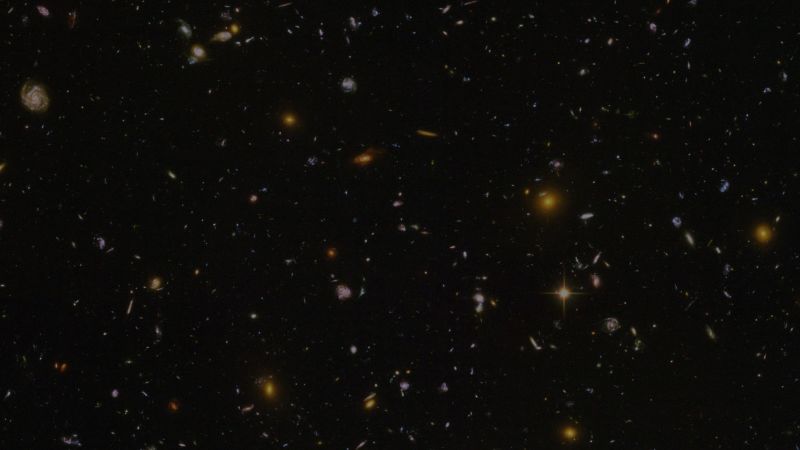A panorama of colliding galaxy clusters glimmers in a new image, captured by the combined forces of the two most powerful space observatories ever created.
The cosmic phenomenon, called MACS0416, is 4.3 billion light-years from Earth. Eventually, the merging pair of giant clusters will combine to form an even more massive collection of glittering galaxies.
New details of the celestial feature have emerged in the colorful image, which unites the observational powers of Hubble Space Telescope in visible light and the James Webb Space Telescope in infrared light, which is invisible to the human eye.
Together, the renowned observatories present a more comprehensive look at the universe. Hubble has long been used to search for faint, distant galaxies across different wavelengths of light. Webb’s infrared gaze enables that search to occur at even farther distances, detecting invisible light deeper into the early days of the universe.
A light-year, equivalent to 5.88 trillion miles, is how far a beam of light travels in a year. Given the distance between Earth and the objects from the early days of the universe, when telescopes such as Webb observe this light, it’s effectively like looking into the past.
“We are building on Hubble’s legacy by pushing to greater distances and fainter objects,” said Rogier Windhorst, regents professor in Arizona State University’s School of Earth and Space Exploration, in a statement.
Windhorst is the principal investigator of the PEARLS, or Prime Extragalactic Areas for Reionization and Lensing Science, program that conducted the Webb observations.
A ‘Christmas tree’ of galaxies
The colors in the new image, released Thursday, are used to indicate distance. Blue-hued galaxies are the closest, bursting with star formation and easily seen in visible light by Hubble. The red galaxies are more distant, best detected by Webb in infrared light.
“The whole picture doesn’t become clear until you combine Webb data with Hubble data,” Windhorst said.
The new Webb observations were used to search for objects that change in brightness over time, called transients.
Within the galactic clusters’ field of view, Webb helped astronomers identify 14 transients, all of which were visible due to gravitational lensing. This cosmic effect occurs when closer objects — such as the galactic clusters — act like a magnifying glass for distant objects. Gravity essentially warps and amplifies the light of distant galaxies in the background of whatever is doing the magnifying, enabling observations of otherwise invisible celestial features.
The transients include 12 stars or star systems and two supernovas in galaxies that were amplified using gravitational lensing.
“We’re calling MACS0416 the Christmas Tree Galaxy Cluster, both because it’s so colorful and because of these flickering lights we find within it. We can see transients everywhere,” said Haojing Yan, associate professor of physics and astronomy at the University of Missouri. Yan is lead author of one study describing the findings that has been accepted for publication in The Astrophysical Journal.
Spotting a stellar giant
One transient in particular captured the attention of astronomers, a star system they have nicknamed “Mothra,” the titular giant monster of a 1961 Japanese film. The stellar system, magnified by a factor of 4,000 due to gravitational lensing, was traced to a galaxy that existed 3 billion years after the big bang created the universe.
The team nicknamed the star system Mothra due to its extreme magnification and brightness.
Surprisingly, Mothra has appeared before, detected in Hubble observations nine years ago. Astronomers are stumped as to how this happened, because there must be a specific alignment between the galactic cluster and the more distant star to cause the magnification at a point in time. So how did Mothra also appear magnified in the new Webb observations?
“The most likely explanation is a globular star cluster that’s too faint for Webb to see directly,” said José Diego, researcher at the Institute of Physics of Cantabria in Spain and lead author of another paper describing the finding, published in the journal Astronomy & Astrophysics. “But we don’t know the true nature of this additional lens yet.”

